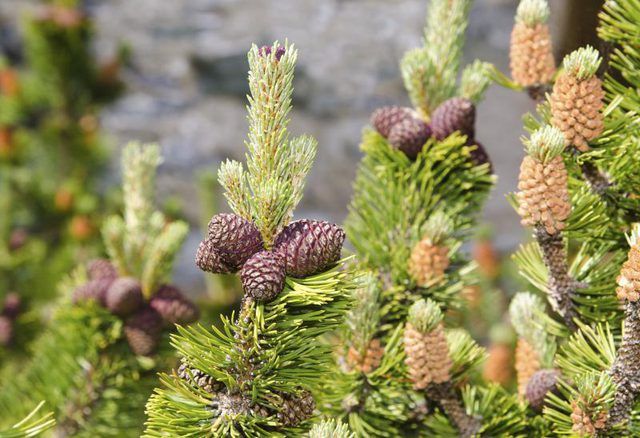Bulbs
Flower Basics
Flower Beds & Specialty Gardens
Flower Garden
Garden Furniture
Garden Gnomes
Garden Seeds
Garden Sheds
Garden Statues
Garden Tools & Supplies
Gardening Basics
Green & Organic
Groundcovers & Vines
Growing Annuals
Growing Basil
Growing Beans
Growing Berries
Growing Blueberries
Growing Cactus
Growing Corn
Growing Cotton
Growing Edibles
Growing Flowers
Growing Garlic
Growing Grapes
Growing Grass
Growing Herbs
Growing Jasmine
Growing Mint
Growing Mushrooms
Orchids
Growing Peanuts
Growing Perennials
Growing Plants
Growing Rosemary
Growing Roses
Growing Strawberries
Growing Sunflowers
Growing Thyme
Growing Tomatoes
Growing Tulips
Growing Vegetables
Herb Basics
Herb Garden
Indoor Growing
Landscaping Basics
Landscaping Patios
Landscaping Plants
Landscaping Shrubs
Landscaping Trees
Landscaping Walks & Pathways
Lawn Basics
Lawn Maintenance
Lawn Mowers
Lawn Ornaments
Lawn Planting
Lawn Tools
Outdoor Growing
Overall Landscape Planning
Pests, Weeds & Problems
Plant Basics
Rock Garden
Rose Garden
Shrubs
Soil
Specialty Gardens
Trees
Vegetable Garden
Yard Maintenance
How to Grow Mugo Pine
How to Grow Mugo Pine. Mugo pine (Pinus mugo) is also called Swiss mountain pine, and this name gives a clue about the conditions the tree prefers. Hardy in U.S. Department of Agriculture plant hardiness zones 2 through 7, mugo pine grows best in areas that experience cool summers, and it doesn't tolerate hot, humid weather. Usually growing wider...

Mugo pine (Pinus mugo) is also called Swiss mountain pine, and this name gives a clue about the conditions the tree prefers. Hardy in U.S. Department of Agriculture plant hardiness zones 2 through 7, mugo pine grows best in areas that experience cool summers, and it doesn't tolerate hot, humid weather. Usually growing wider than its height, the tree's final dimensions depend on the variety grown. Mugo pine can grow 15 to 20 feet tall and 25 to 30 feet wide, but many dwarf cultivars are available. Wood, sawdust and resin from mugo pines can irritate skin.
Growing Spots
Mugo pine grows best in full-sun sites in moist, well-drained soil. This tree thrives in loam and sandy soil and tolerates clay soil and poor soil, but it doesn't grow well in poorly drained, wet soil. Mugo pine grows in urban settings, such as front yards, exposed sites and coastal sites, because it tolerates air pollution, heavy winds and salt exposure. Space mugo pine trees according to the final growing width of the variety. For example, if the trees grow 3 feet wide, space their trunks 3 feet apart.
Watering Mugo Pine
Mugo pine tolerates drought better than wet soil, and the tree could die if over-watered. To test the soil moisture level, dig down to a depth of 4 to 8 inches, avoiding the tree's roots, and take a handful of soil. Squeeze the soil in your fist. If water runs out, the soil is too wet. When the moisture level is correct, a thin layer of moisture and dirt stain are left on the hand. Infrequent, heavy watering encourages mugo pine to grow deep, drought-resistant roots. Water mugo pine when the soil is dry to a depth of 2 inches, and apply enough water to puddle the tree.
Applying Fertilizer
A slow-release, balanced fertilizer applied once a year benefits mugo pine. For established trees, spread 2 pounds of ready-to-use, granular 10-10-10 fertilizer for every 1 inch of the trunk's diameter every spring. Sprinkle the fertilizer evenly over the ground within the tree's drip line, but don't allow it to touch the tree's trunk. Slow-release fertilizers are also best for newly planted mugo pines, which can suffer from overfertilization. In spring of the trees' second year, spread 2 pounds of 10-10-10 fertilizer per 10-foot-square bed of mugo pines, or about 1/2 pound per tree.
Growing Compact Mugo Pines
Pruning mugo pine maintains a compact size, or you can grow dwarf varieties. Sterilize pruning shear blades by wiping them with a cloth dipped in rubbing alcohol, and prune diseased, dead or damaged mugo pine stems in late winter; prune stems to the desired length, but take care not to prune so deeply as to expose the brown, inner stems, which do not sprout green foliage. Sterilize shears again when you've finished. Pruning must be done annually to keep a tree small; it isn't possible to prune a large tree to a compact size. "Gordon Bentham" (Pinus mugo "Gordon Bentham," USDA zones 3 through 7) and "Aurea" (Pinus mugo "Aurea," USDA zones 2 through 7) are dwarf mugo pine cultivars. "Gordon Bentham" grows 3 to 6 inches tall and 3 to 18 inches wide, and "Aurea" grows 2 to 3 feet tall and 2 to 4 feet wide. "Aurea" features yellowish-green to light green needles that turn golden-yellow in winter.